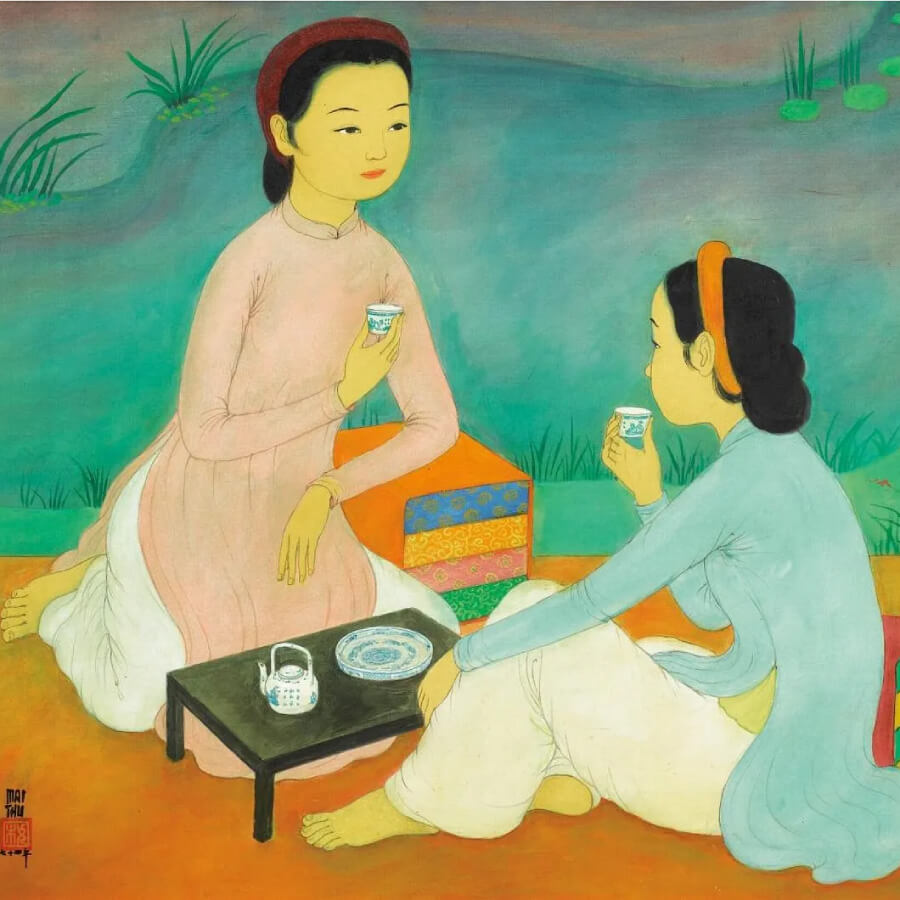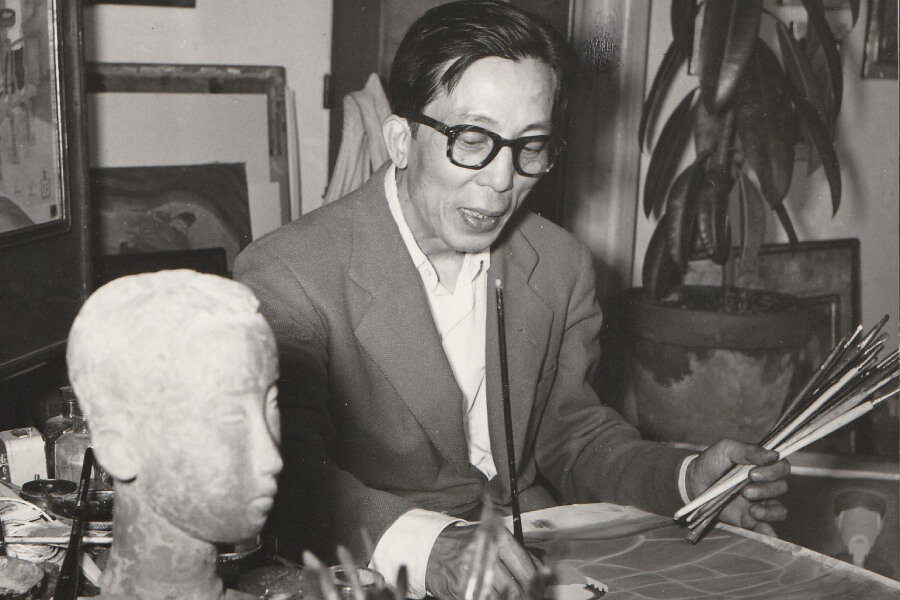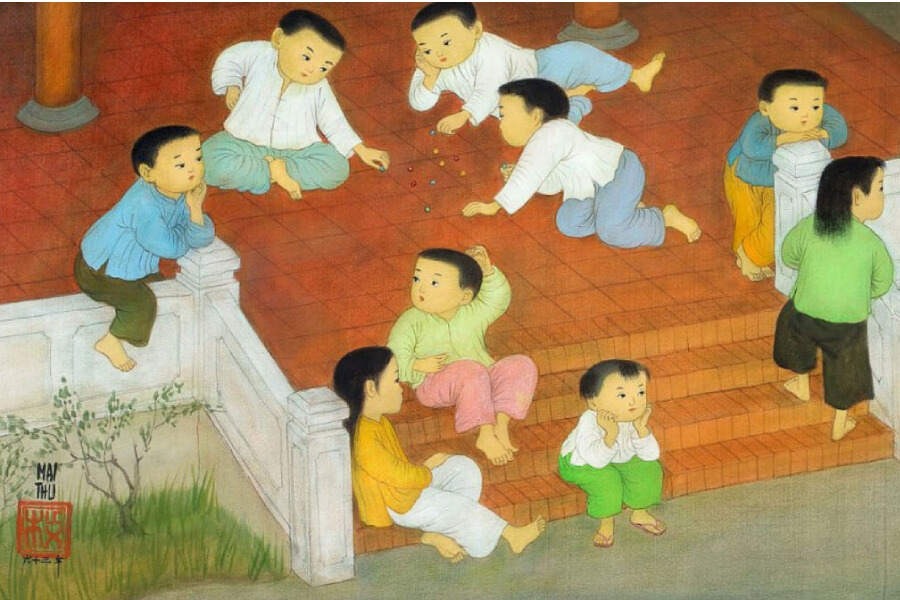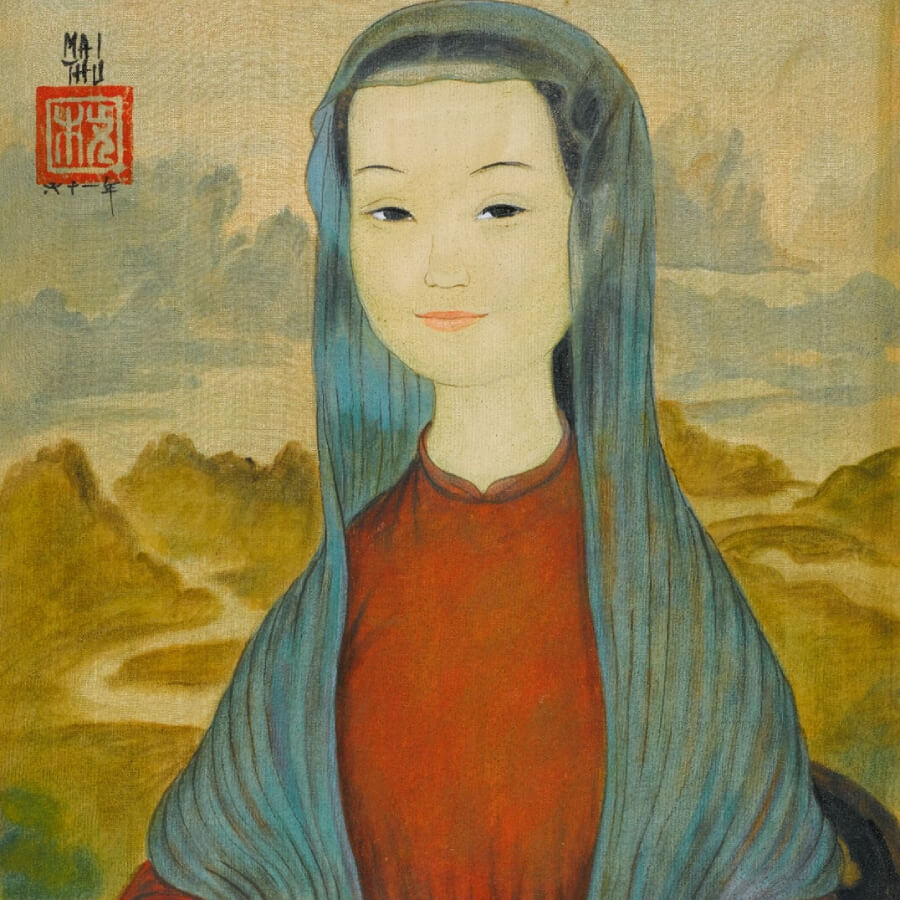Biography of Mai Trung Thu
Mai Trung Thu (1906-1980), was born in in Ro Nha, Kien An, Hai Phong city.
He enrolled in the Indochina Fine Arts College’s inaugural class in 1925 at the same age as Nguyen Phan Chanh, Le Van De, Le Pho, and Nguyen Cao Luyen. Victor Tardieu exclusively created this fine art school for all of Indochina. Principal, Tardieu is a forward-thinking French thinker who is also a talented artist and educator.
He was one of the painters who graduated from the first course of the Indochina Fine Arts College (1925-1930). Most of his life he lived and worked in art in France. Mai Trung Thu is one of the four European masters of Vietnamese painting (Phu – Thu – Luu – Dam).
Mai Trung Thu’s Career
Mai Trung Thu painted themes of rural life in Vietnam in oil throughout his school years before switching to silk, which is the medium that ultimately helped him become famous. Bright colors make Mai Trung Thu’s paintings stand out; the individuals and settings are just as colorful as those in To Ngoc Van’s later works.
In 1930, after graduating from Indochina Fine Arts College, Mai Trung Thu was appointed to teach drawing at Hue School. Here, his talent for silk painting flourished. A series of his silk works were born with the characters in his works being gentle Hue girls, charming scenes by the Perfume River, and the curved roofs of temples and mausoleums. He experienced intense visions and recollections throughout his six years of living and working in Hue, the imperial capital of Vietnam, and at the same time, he solidified his position in the modern painting sector.
In the 1930s, along with a number of other artists, Mai Trung Thu participated in exhibitions of paintings in many countries around the world such as in Italy (Roma 1932, Milan 1934, Naples 1934), in Belgium (Brussels 1936), in the US (San Francisco 1937) and in France where he later settled. After participating in the Paris Fair in 1936, Mai Trung Thu decided to stay and live and work in the city that was likened to the capital of light, where the world’s master painters converged at that time. He primarily painted with recollections of young girls, Vietnamese children, Vietnamese countryside, leaf roofs, or temples during his decades of living and working in the French capital.
In 1946, he sent home with a documentary he had created under the banner of Tan Viet, titled “The Vitality of 25,000 Overseas Vietnamese in France.” The movie was then shown repeatedly in Hanoi theatres.
Also in 1946, at the invitation of the President of the French Republic, President Ho Chi Minh and a high-ranking delegation visited the French Republic, painter Mai Trung Thu, director of Tan Viet Film Studio, was was tasked with accompanying Uncle Ho for four months to document his activities in France. In 1975, the painter donated these precious films to the Party and State of Vietnam. Those are the movies that capture the image of President Ho Chi Minh after gaining independence and freedom for the country, warmly welcomed in the arms of the French people and tens of thousands of overseas Vietnamese. The footage has become the only historical document about President Ho Chi Minh’s activities in France. His precious documentaries such as ‘Ho Chi Minh in France’ or “Fontainebleau Conference 1946” have been invaluable in supplying historical materials to later Vietnamese and international documentary filmmakers.

In 1974, Mai Trung Thu visited Vietnam after 38 years away from home with many other writers and artists, including sculptor Diem Phung Thi (his student) at the invitation of the Government of the Democratic Republic of Vietnam.
In 1980, he passed away suddenly because of heart disease, at the age of 75. His body was buried at the foot of a mountain not far from the French capital.
Many people still recognize Mai Trung Thu as a well-known painter of modern Vietnamese art in the early 20th century, despite the fact that he spent the majority of his life working in France.
On May 28, 2021, the Paris-based Cernuschi Museum, which specializes in Asian art, announced plans to host an exhibition featuring 140 pieces by Mai Trung Thu. Experts anticipate the event given that several of his artworks have sold for significant amounts.
Mai Trung Thu’s Highlighted Artworks
• Portrait de Mademoiselle Phuong sold by Sotheby’s in April for HK$24.4 million (US$3.1 million)
• Nature Morte
• Young girl with book, 1941
• Hair dressing
• Woman by the window, 1952…





